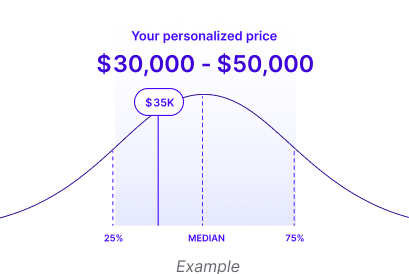Redgate Software
$1,431–$16,283per year
Fast, fair, easy pricing. No sales call required.
Redgate Software
|Visit red-gate.com
How much does Redgate Software cost?
Median contract value
$5,952
Based on data from 22 purchases.per year
Median: $5,952
$1,431$16,283
LowHigh
See detailed pricing for your specific purchase
AI Quote Analysis
Upload your quote to check if you’re getting a fair price, under 2 minutes and completely free.

How does Redgate Software price and package their products?
View pricing on Redgate Software's website
Product:
Basic
$210 USDPayment Terms: AnnualPopular Features: IntelliSense-style code completion and one-click SQL formatting
Negotiating with Redgate Software
Negotiation Tips
Presenting competing offers from different providers can be one of the most effective negotiation tactics for software purchases. By showcasing a more competitive pricing offer from a similar vendor, you create leverage in your discussions that can lead to a better deal with Redgate. Ensure to highlight the specific functionalities and pricing differences to strengthen your position.
When facing a renewal involving price increases or uplifts, customers who articulate financial constraints effectively can obtain better outcomes. Highlight that your projected budget only accounts for a flat renewal and ask for a reevaluation on the expected uplift, especially since stable or decreasing usage typically warrants better pricing terms.
This tactic focuses on negotiating the removal of auto-renewal clauses. Stress that, due to recent financial reviews, your organization mandates that contracts no longer include such terms. This provides leverage to negotiate better contract conditions for the upcoming term without being locked into automatic renewals.
If you're planning to add more users or licenses during renewal, leveraging this growth can be an excellent strategy to negotiate lower rates. Emphasize that your finance team requires economies of scale and will likely only approve the renewal if there's an adjustment on the pricing tiers to reflect your increased usage.
Requesting to carry over current discounts as you engage in negotiations can yield significant savings. Emphasize that your finance team initially budgeted for a flat renewal and, without clarity about the longevity of any discount, your company may need to reconsider its options. Make clear that renewing under the same terms is essential.
Considerations when buying Redgate Software
OwnershipRedgate Software is a privately held company.
Fiscal year endDecember 31st
Best months to buyDecember, June, November
Payment TermsAnnual upfront payment, Monthly subscription options available for some products
Upgrades/downgradesYes, Redgate Software offers both upgrades and downgrades for its services, making it easy for users to adjust their resources as their needs change.
Redline thresholdRedline threshold estimate is $50k.
Vendr community insights for Redgate Software
What real buyers recommend in the negotiation process
Company with 201-1000 employeesThis year
We were able to secure a 30% discount on our Redgate Software subscription through purchasing through SHI. Company with 201-1000 employeesThis year
We were able to receive a 50% discount on Toolbelt essentials and 30% discount on SQL Toolbelt through purchasing through SHI. Additional Info
What is Redgate Software?
Redgate Software is a software company based in Cambridge, England.Redgate Software's 8 Product
Redgate Deploy
Redgate Deploy lets your teams automate databaseRedgate Software SQL Toolbelt Essentials
Redgate Software is a software company based in Cambridge, England.SQL Clone
SQL Clone is a database provisioning tool that lets you create full copies of SQL Server databases and backups in seconds, using around 40 MB of disk space per clone.Security and compliance
DPA available
SOC2 attestation
Annual penetration tests
News that may impact Redgate Software pricing or negotiations
Business Wire
Redgate Launches Advanced AI Capabilities Across Its Database DevOps PortfolioNovember 7, 2024Business Wire
Redgate Software Announces Acquisition of DB-EnginesJune 19, 2024Business Wire
Redgate Launches Enterprise Edition of Redgate Monitor, Enhancing Security and Compliance and Addressing the Challenges of Scale and Complexity for Large OrganizationsApril 17, 2024